Abstract
Patients with Parkinson's disease performed several different stereotyped elbow flexion tasks, and the electromyographic (EMG) patterns from biceps and triceps were compared with previously established normal standards. The EMG pattern during a smooth flexion task was almost always abnormal and was characterized by alternating activity in biceps and triceps. The EMG patterns during a fast flexion task were also usually abnormal although they were always composed of bursts of EMG activity of normal duration appearing alternately in the agonist and antagonist muscles. These bursts, associated with movements of the limb, have a superficially similar appearance to the EMG bursts seen with tremor-at-rest, but certain physiological differences are demonstrated. This study demonstrates that both slow (ramp) and fast (ballistic) movements are clearly abnormal in these patients with disease of the basal ganglia. In a task designed to investigate antagonist inhibition before agonist activity, a majority of the patients performed normally. This suggests that, contrary to previous claims, slowness of movement (akinesia/bradykinesia) is not due either to failure to relax or to rigidity of antagonist muscle.
Full text
PDF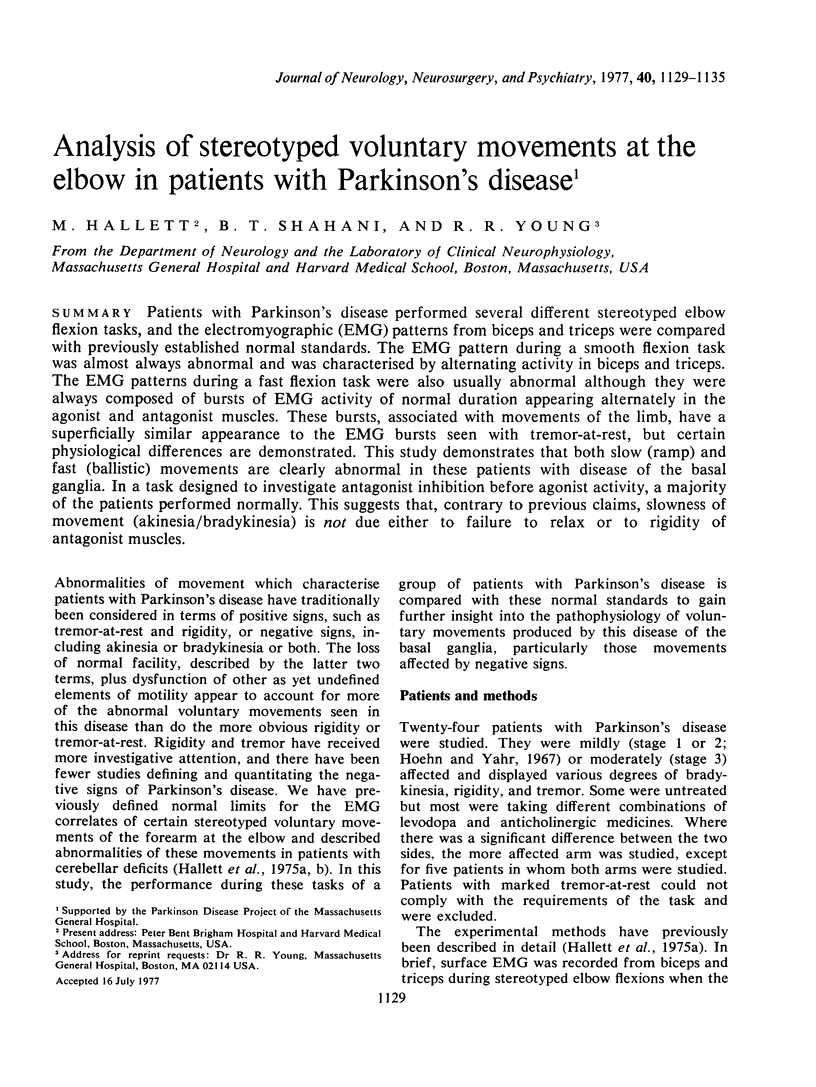
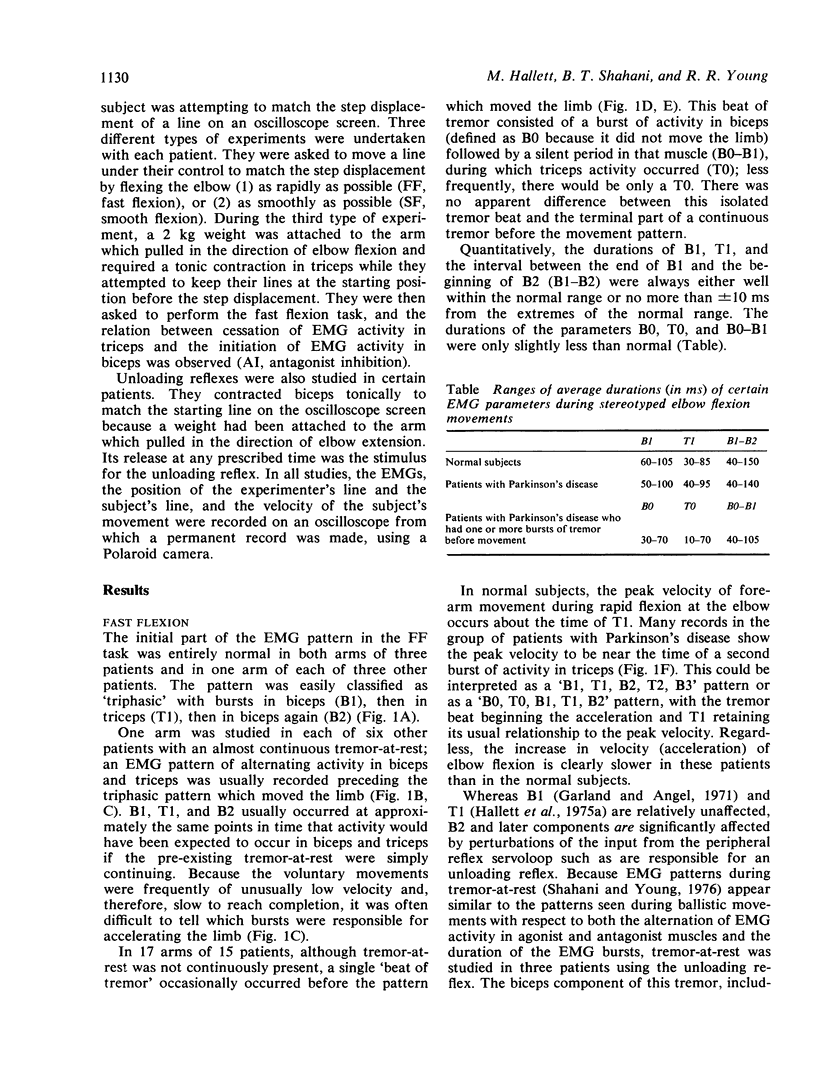
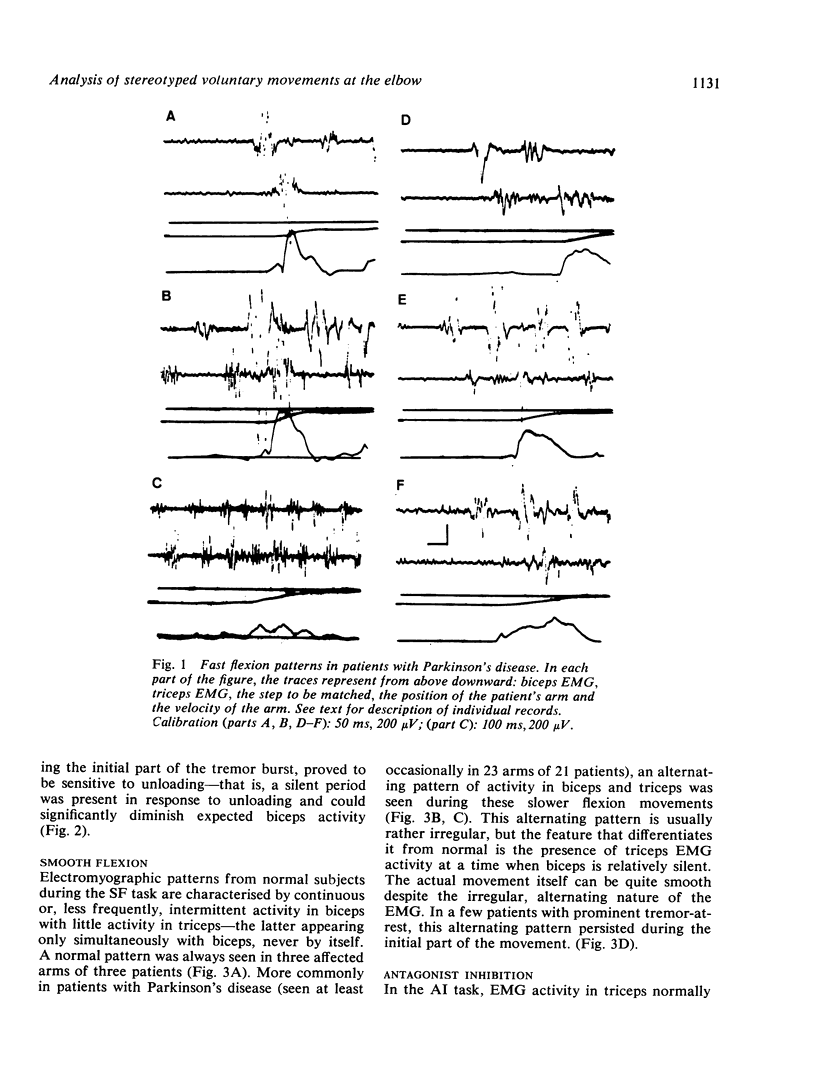
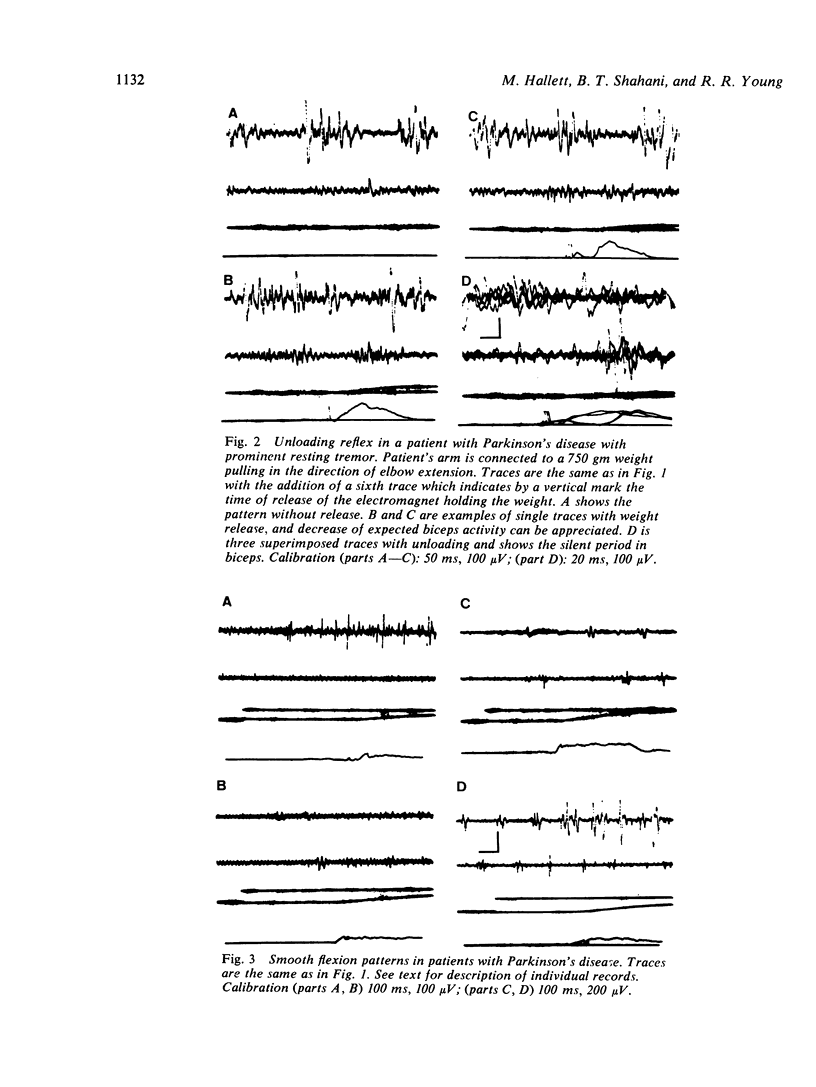
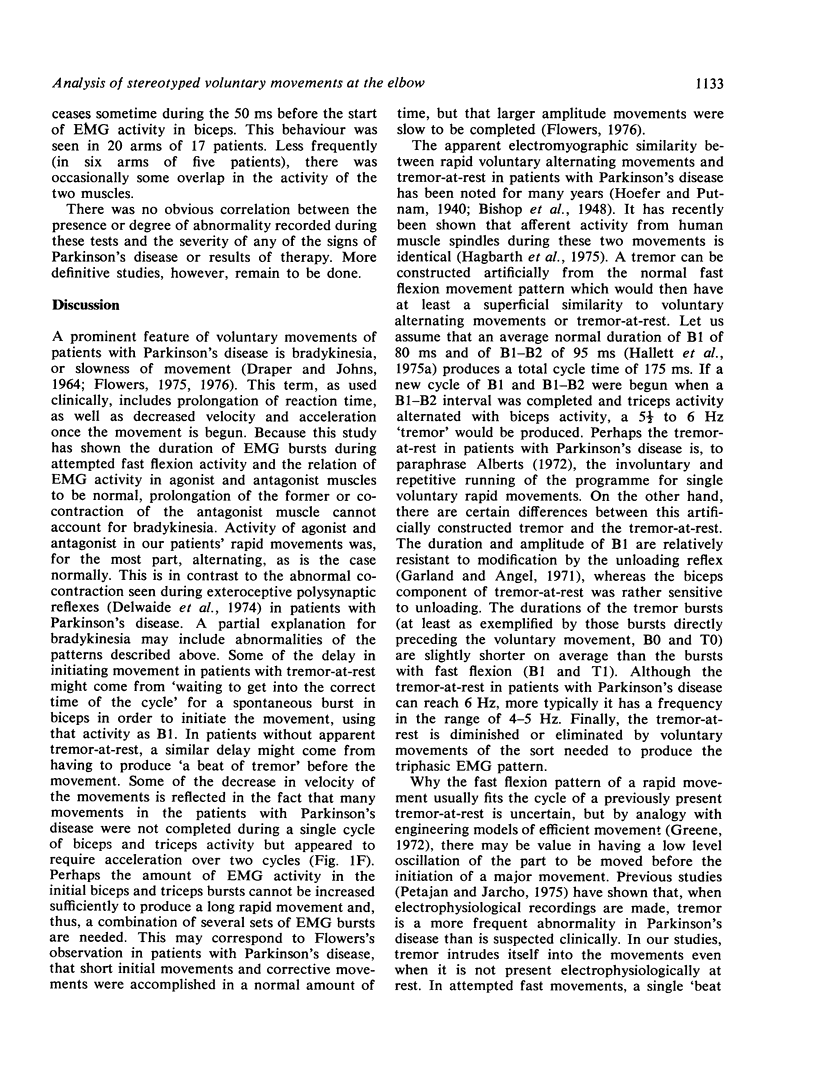
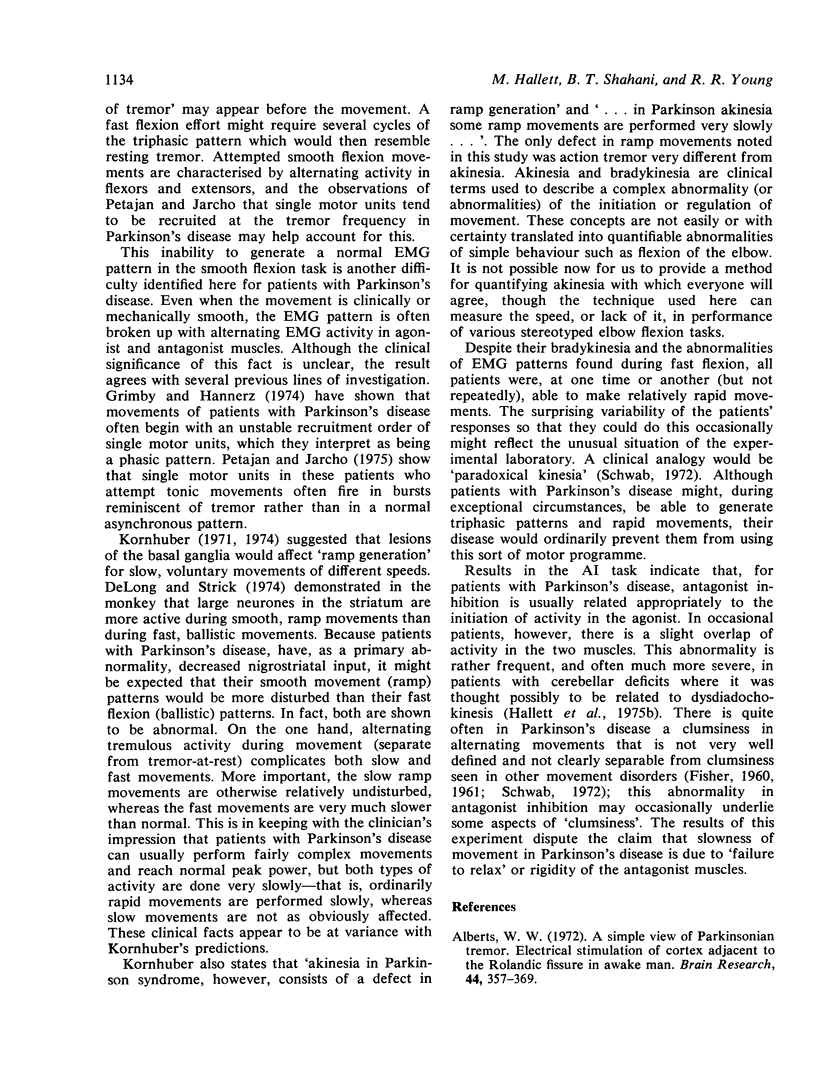

Selected References
These references are in PubMed. This may not be the complete list of references from this article.
- Alberts W. W. A simple view of Parkinsonian tremor. Electrical stimulation of cortex adjacent to the Rolandic fissure in awake man. Brain Res. 1972 Sep 29;44(2):357–369. doi: 10.1016/0006-8993(72)90308-3. [DOI] [PubMed] [Google Scholar]
- DRAPER I. T., JOHNS R. J. THE DISORDERED MOVEMENT IN PARKINSONISM AND THE EFFECT OF DRUG TREATMENT. Bull Johns Hopkins Hosp. 1964 Dec;115:465–480. [PubMed] [Google Scholar]
- DeLong M. R., Strick P. L. Relation of basal ganglia, cerebellum, and motor cortex units to ramp and ballistic limb movements. Brain Res. 1974 May 17;71(2-3):327–335. doi: 10.1016/0006-8993(74)90975-5. [DOI] [PubMed] [Google Scholar]
- Delwaide P. J., Schwab R. S., Young R. R. Polysynaptic spinal reflexes in Parkinson's disease. Neurology. 1974 Sep;24(9):820–827. doi: 10.1212/wnl.24.9.820. [DOI] [PubMed] [Google Scholar]
- FISHER C. M. A simple test of coordination in the fingers. Neurology. 1960 Aug;10:745–746. doi: 10.1212/wnl.10.8.745. [DOI] [PubMed] [Google Scholar]
- FISHER C. M. An improved test of motor coordination in the lower limbs. Neurology. 1961 Apr;11(4):335–336. doi: 10.1212/wnl.11.4.335. [DOI] [PubMed] [Google Scholar]
- Flowers K. A. Visual "closed-loop" and "open-loop" characteristics of voluntary movement in patients with Parkinsonism and intention tremor. Brain. 1976 Jun;99(2):269–310. doi: 10.1093/brain/99.2.269. [DOI] [PubMed] [Google Scholar]
- Flowers K. Ballistic and corrective movements on an aiming task. Intention tremor and parkinsonian movement disorders compared. Neurology. 1975 May;25(5):413–421. doi: 10.1212/wnl.25.5.413. [DOI] [PubMed] [Google Scholar]
- Garland H., Angel R. W. Spinal and supraspinal factors in voluntary movement. Exp Neurol. 1971 Nov;33(2):343–350. doi: 10.1016/0014-4886(71)90026-4. [DOI] [PubMed] [Google Scholar]
- Grimby L., Hannerz J. Disturbances in the voluntary recruitment order of anterior tibial motor units in bradykinesia of Parkinsonism. J Neurol Neurosurg Psychiatry. 1974 Jan;37(1):47–54. doi: 10.1136/jnnp.37.1.47. [DOI] [PMC free article] [PubMed] [Google Scholar]
- Hagbarth K. E., Wallin G., Löfstedt L., Aquilonius S. M. Muscle spindle activity in alternating tremor of Parkinsonism and in clonus. J Neurol Neurosurg Psychiatry. 1975 Jul;38(7):636–641. doi: 10.1136/jnnp.38.7.636. [DOI] [PMC free article] [PubMed] [Google Scholar]
- Hallett M., Shahani B. T., Young R. R. EMG analysis of patients with cerebellar deficits. J Neurol Neurosurg Psychiatry. 1975 Dec;38(12):1163–1169. doi: 10.1136/jnnp.38.12.1163. [DOI] [PMC free article] [PubMed] [Google Scholar]
- Hallett M., Shahani B. T., Young R. R. EMG analysis of stereotyped voluntary movements in man. J Neurol Neurosurg Psychiatry. 1975 Dec;38(12):1154–1162. doi: 10.1136/jnnp.38.12.1154. [DOI] [PMC free article] [PubMed] [Google Scholar]
- Hoehn M. M., Yahr M. D. Parkinsonism: onset, progression and mortality. Neurology. 1967 May;17(5):427–442. doi: 10.1212/wnl.17.5.427. [DOI] [PubMed] [Google Scholar]
- Kornhuber H. H. Motor functions of cerebellum and basal ganglia: the cerebellocortical saccadic (ballistic) clock, the cerebellonuclear hold regulator, and the basal ganglia ramp (voluntary speed smooth movement) generator. Kybernetik. 1971 Apr;8(4):157–162. doi: 10.1007/BF00290561. [DOI] [PubMed] [Google Scholar]
- Petajan J. H., Jarcho L. W. Motor unit control in Parkinson's disease and the influence of levodopa. Neurology. 1975 Sep;25(9):866–869. doi: 10.1212/wnl.25.9.866. [DOI] [PubMed] [Google Scholar]
- Shahani B. T., Young R. R. Physiological and pharmacological aids in the differential diagnosis of tremor. J Neurol Neurosurg Psychiatry. 1976 Aug;39(8):772–783. doi: 10.1136/jnnp.39.8.772. [DOI] [PMC free article] [PubMed] [Google Scholar]


